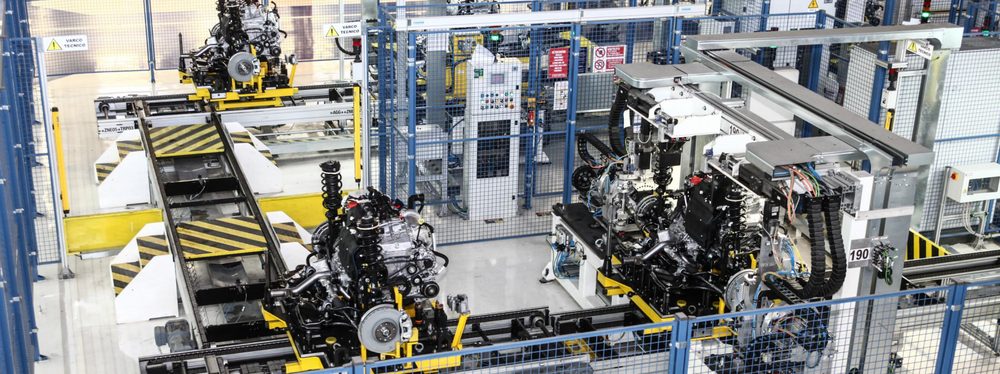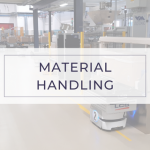What is an assembly line
An assembly line is an automated solution that helps make a manufacturing process efficient and faster. It is based on well-integrated and engineered software and hardware components.
The production system involves the adoption of a conveyor belt on which semi-finished products and components are run based on predetermined and appropriately synchronized times.
There are assembly stations along the assembly line that can be manned by one or more workers. The operation of automatic assembly lines presupposes standardization not only of the process, but also of the various parts, which brings significant advantages from the point of view of production time, which is thus shorter. In addition, the moment the process is divided into short steps and is based on simple operations, the work of workers is greatly facilitated.

Stages of making an assembly line
LCS Automation, a company part of the LCS Group, follows an assembly line implementation procedure consisting of four main stages:
- the data analysis with the project feasibility study;
- the execution of the project;
- the installation, with operator training and startup;
- the service and maintenance.
With this way of making assembly lines, you can benefit from higher productivity and better service quality, not least because the risk of incurring errors is greatly reduced.
Data analysis
Data analysis is concerned with the information that has been gathered from the customer in relation to his or her needs and objectives: only then can we turn to the design of the assembly lines.
To this end, a site survey can be carried out, which is useful for assessing the feasibility of the project, also taking into account the characteristics of the plants and the space available in the facilities. This is a consultancy phase, preparatory to the design of the assembly line, which is also essential to define the necessary investment and budget to be allocated.
Implementation phase, training and startup
After that, the actual execution of the project can be continued, which requires the integration of electrical, software and mechanical parts. Depending on the level of complexity of the work required, the time needed to complete the work varies.
Once automatic assembly lines have been installed, proper training must be provided for operators to learn how the machines are operated and how they work. Employees can be trained, not only on how the assembly line works, but also on procedures in case of breakdowns or anomalies.
Then comes Startup, which is the commissioning of the line. At this stage, the machinery comes into operation.
Service and maintenance
From the moment of commissioning, the customer can count on comprehensive after-sales service, involving, among other things, periodic and preventive maintenance of the systems. In addition, depending on the contract, remote assistance 7 days a week and 24 hours a day can also be guaranteed.
In general, it can be said that, for the construction of a mechanical assembly line, the starting point is always the mechanical/electrical-pneumatic design, followed by a PLC programming phase with commissioning; after which the mechanical parts, control panels and their installation are built.
Revamping of the plants
LCS Automation, in addition to providing dedicated service, offers the opportunity to revamp older plants to modernize them and make them more functional.
The entire lifecycle of an assembly line is taken care of down to the smallest detail, so as to guarantee comprehensive service and highly qualified electromechanical maintenance. Specifically, tailored revamping interventions can cover electronics, mechanics, PLC hardware and PLC software, as well as energy-saving solutions.
Maintenance and service
Maintenance and service, on the other hand, covers electromechanics, mechanics, robotics, electrical systems, and switchboards.
Automotive assembly lines: the importance of digitization
The use of automated processes for a machine assembly line is possible because of the giant strides made over the past few years by digitization technology.
Today, for example, it is possible to take advantage of driverless robotic lines for car assembly, that is, they can be governed through ad hoc software. The modern context is characterized by a strong demand for flexibility, to which plants must necessarily respond: precisely, by replacing classic assembly lines with high-tech lines.
Vehicles that need to be built are moved by robotic transport platforms to the workstations or processing sites for which they are intended. As needed, the workstations receive all the components and parts needed through a series of robotic transports and parallel procedures.
Digitization ensures the ability to take advantage of highly automated processes for automotive assembly lines, including for component picking and delivery.
The Internet of Things (IoT) is, from this point of view, a technology of absolute importance, especially with regard to RFID, which is capable of operating over very large areas and ensures long-lived labeling-an aspect not to be underestimated in automated environments where the arrival of an incorrect component risks bringing the production line to a halt.
LCS Automation specializes in the automotive sector, by virtue of the many projects that have been developed over time for major automakers around the world. The company’s customers have access to turnkey solutions that are fully managed by a single partner.
LCS Automation and customized solutions for assembly lines
LCS Automation is involved in the design and development of automation solutions modulated according to specific needs and requests from customers: contact us for more information and to get a closer look at our modus operandi.



